It’s been a couple of years since I wrote about a vintage Tissot on the blog, so let’s have a look at this T12 Navigator.
(Click pictures to enlarge)
The T12 range was produced from the 1950’s until the 1970’s and were aimed at the more active segment of the market. I’ve written about another watch from the T12 range before, the Sonorous alarm watch in which I gave more details on the background of the range, so rather than repeat myself, I’ll direct any interested parties to that post here.
The watch in this post and others from the same range were produced in the late 1960 and early 1970’s and are nicknamed, rather unsurprisingly, ‘the flying saucers’. At 44mm in diameter (excluding the crowns) and with an solid steel integrated bracelet, it’s safe to say that you won’t forget you’re wearing it, but the lack of lugs makes it less intrusive than other watches of a similar size.
Here is a French advert from 1972, where the rugged nature of the T12 is highlighted; Super-Tough and Super-Sealed.
Turning the watch over, the caseback features the attractive galleon seen on many Tissot watches of this era, and inside the caseback, is the diving helmet logo denoting that the Compressor case was made by the Swiss manufacturer EPSA (Ervin Piquerez S.A).
Powering the watch is a calibre from Tissot’s widely used 7xx series, the cal. 788; a 21 jewel automatic calibre with a limited quickset date, a leisurely beat rate of 18,000 bph, and the addition of a 24hr wheel… but more about that later.
I’ve written about lots of watches with internal bezels on the blog, but it’s worth spending a minute or two on how they work. With the crystal/gasket and inner bezel removed, you can see that a gear is mated to a winding stem which passes through the case to the upper crown.
The bezel sits in a channel inside the case, and the underside of the bezel has teeth which mesh with the winding gear, allowing it to be moved freely in either direction. All relatively straight forward….
However, the fit of the crystal is crucial to the operation of the bezel. Some watches have a thin metal spacer between the bezel and crystal, but in most cases it’s only the inner profile of the crystal that keeps the bezel in place. If the wrong crystal has been fitted (often as a work-around when original crystals are no longer available), it can result in either a ‘rattly’ or skipping bezel action, or worse, the crystal can trap the bezel completely, rendering it immoveable.
This then adds the risk of breaking teeth off the gear or inner bezel if the crown is forced, especially if the bezel is plastic rather than the metal example here. Once that happens, even with the right crystal installed, the result is a ‘dead spot’ in the bezel action.
Thankfully that wasn’t the case here, everything was original and working perfectly, but I’d recommend keeping that in mind if you’re considering buying a watch with a non-operational inner bezel.
What may not be immediately obvious is that this watch has a 24hr time readout, in other words, the hour hand only rotates once around the dial every 24hrs rather than twice. So when the watch is showing what would normally be 4 o’clock, it’s actually 8 o’clock… and the chance of confusion doesn’t stop there.
If you look at the first picture above, you’ll see that the hour track inside the dial markers starts with ’12’ at the top, rather than ’24’ as you’d expect – almost as though the dial print has been transposed. So, if you were to set the watch at midnight to 12 as you normally would, at 8am, the hour hand would be at the 4 o’clock dial marker, with the ’20’ hour numeral next to it – What’s all that about?
Apparently, the thinking is that the upper half of the dial (from 06:00 to 18:00) denotes day hours and the lower half denotes night hours, and Tissot did produce a ‘two-tone’ T12 dial variant to make it a little more obvious.
So does that mean the watch should be set at midnight to what would normally be 6 o’clock, so that the hour hand corresponds with the day and night hours on the dial? It’s all a bit too much for my brain to comprehend… I need a lie down!
The watch arrived in relatively good condition and needed no more than a routine movement service, and a thorough clean for the case and bracelet. From a cosmetic perspective it was in good shape too, with just a few marks on the acrylic crystal that needed to be polished out and the yellow sweep second hand was missing a section of paint, so needed to be stripped and re-painted before the watch could be rebuilt.
You may also be wondering how the city bezel works on these watches. Using the picture above as an example, the inner bezel is rotated until a city in the current time zone is aligned with the hour hand, in the case above Buenos Aires. If the current time is 20:08, then the time in Paris is 01:08, Hong Kong 08:08, Sydney 10:08 and so on.
Finally, the owner of this watch also sent in a T12 Sonorous for servicing at the same time, so here’s a picture of the two stable-mates together. An attractive pair, I’m sure you’ll agree.
Rich.
** Many thanks to Niclas for letting me feature his watch on the blog. **

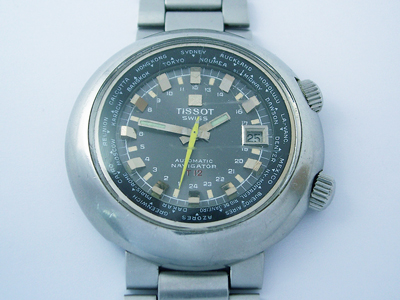
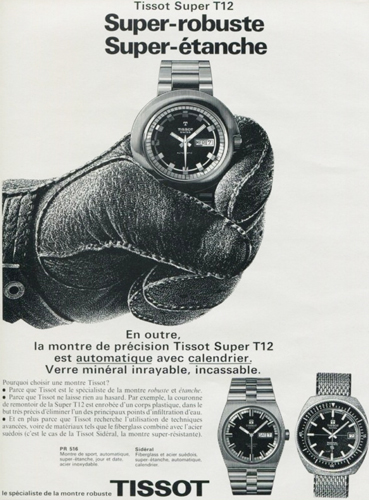
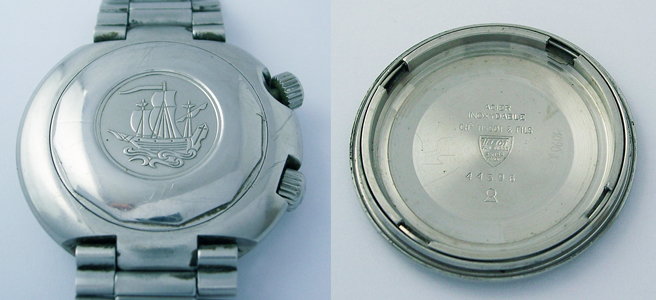
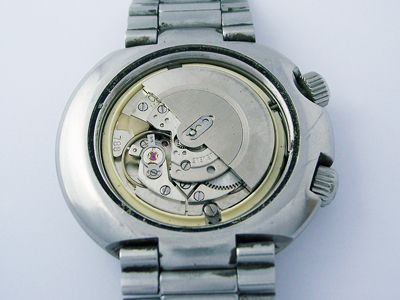
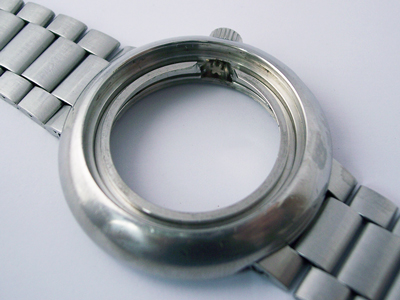
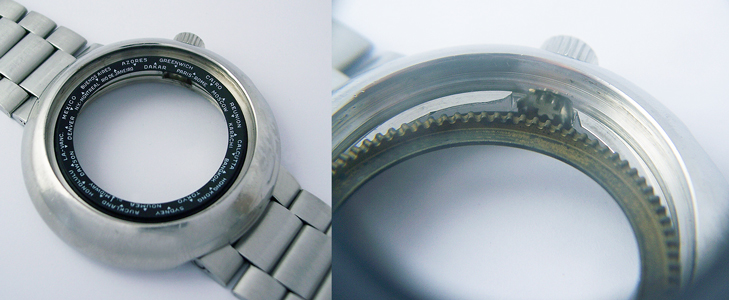
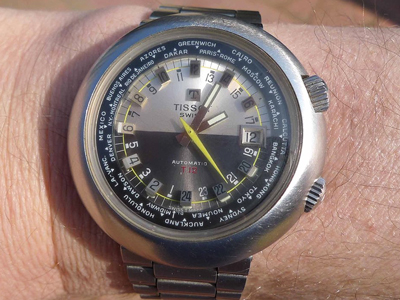
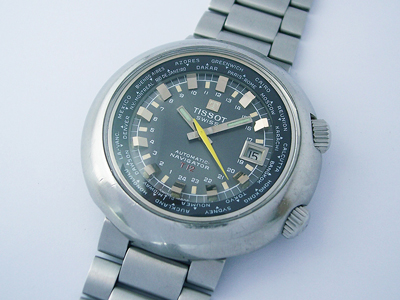
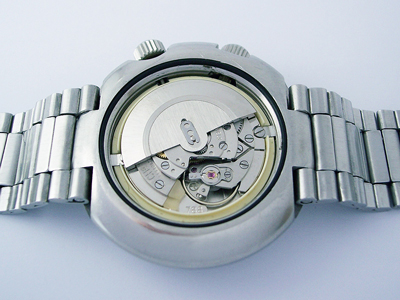
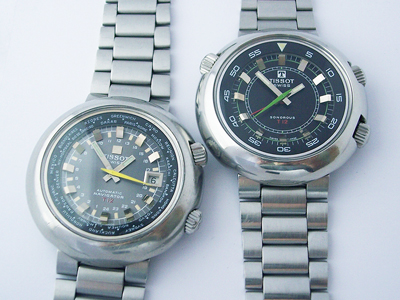
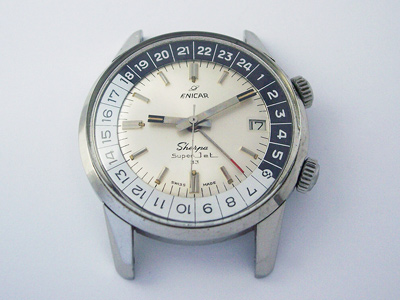
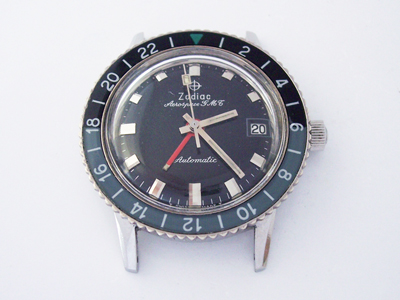
Do you know what the case number is for this watch? I don’t want to mess with taking off the back unless I really have to..
Thanks
Great article on this watch, well done. I have a 1971 T-12 Navigator like this one and have lost the connector in the metal band (the one that connects to the case and the 1st link) when I had an accident. Any idea where I could find this part? Doesn’t have to be new.
Thanks and regards
Ron Mattsson